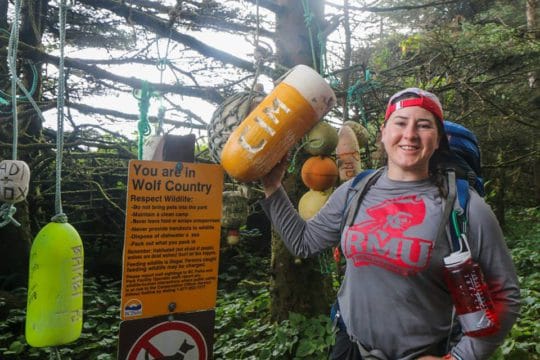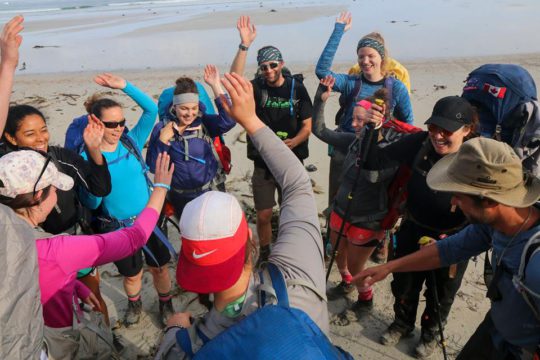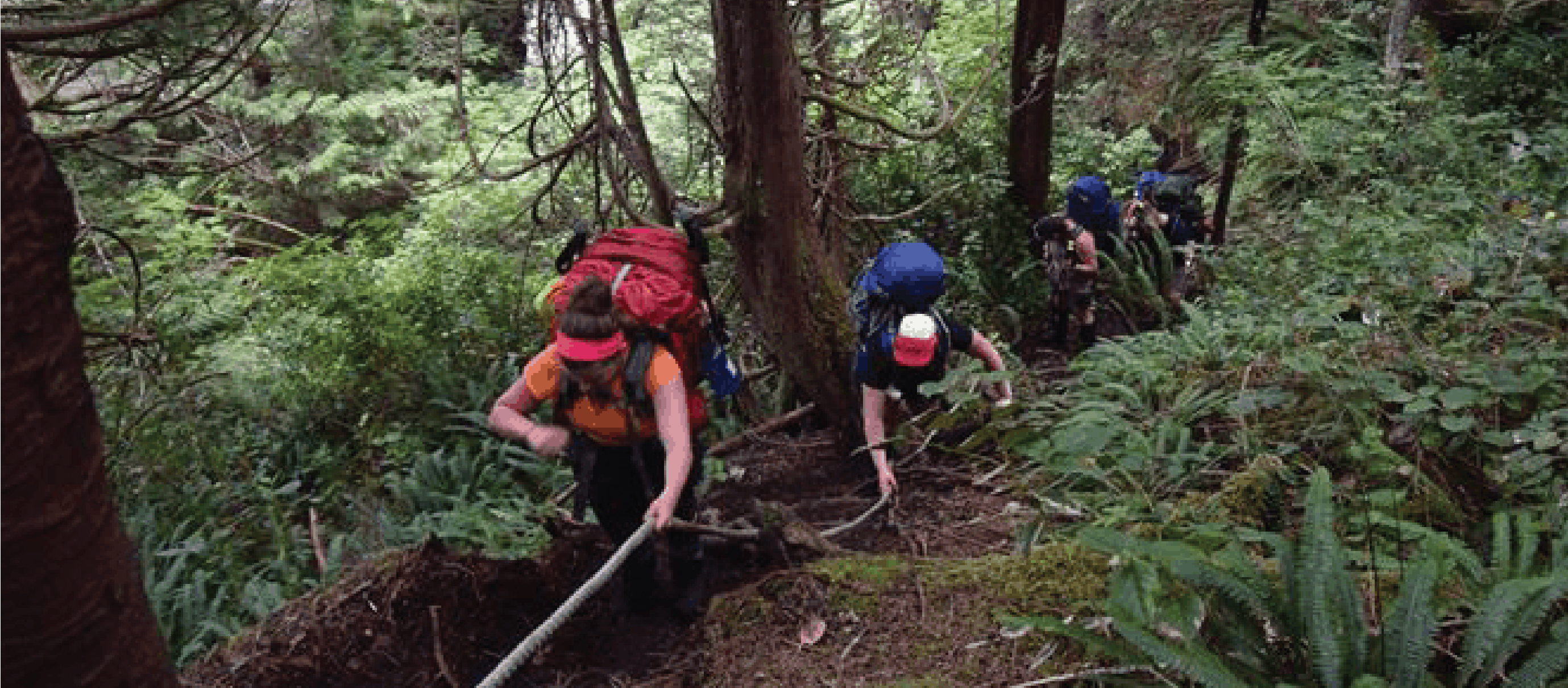 Words & Photos by Anissa Gamble
Words & Photos by Anissa Gamble
Gamble here, a recent CIM 2017 adventurer who embarked on the long 72km North Coast Trail. For me, I grew up playing competitive hockey, and a big component of my training was spent off the ice and in the gym. I’ve been extremely fortunate to grow up loving fitness, but you don’t have to be an all-star to train! You just need to get up and get moving!
To me, preparation is key. Continuous and consistent practice is imperative to any adventure or opportunity in one’s life. Type 1 diabetes (T1D) is a broad term because every person with T1D is different. From the physiology of diagnosis to daily basal rates, metabolism to glucose storage, every patient with diabetes is like a finger print because we’re all unique. Adding to those factors, there is no textbook for perfect blood glucose (BG) control. Sadly, this may require a lot of trial and error. It may take some time to feel confident in your ability to control your glucose levels while being physically active and that is okay! It’s normal, and it’s never set in stone.
For the big hike, I knew it was imperative to arrive in great shape so I could enjoy the trip instead of worrying about controlling my diabetes. Most of my own training is tailored towards anaerobic training due to my hockey-playing endeavours. But hiking uses a completely different energy system because it’s an aerobic activity, so it uses different physiological pathways and energy sources. Therefore, never treat all types of activities the same, as different kinds of activity can affect one’s BG differently.
I started training specifically for the hike two months prior to departure. I switched up my routine from doing hockey-related training, such as speed and agility, to more of a cardio-based routine that increased my cardiovascular fitness.
Here are my 5 steps to get in “Great Gambino Shape.”
1. Do a baseline test
I went to Banff and did an 8 hour hike with a small backpack to first evaluate my level of endurance and how my BG levels would react. Honestly, I was struggling both physically and BG-wise (I went through 100g of carbs due to low glucose levels), but it’s better to learn this far in advance than on the trip. After you get your butt kicked during this experience, sit down and write out your short, middle and long-term physical goals. Make a schedule and stick to it!

2. Do your research and have the proper tools to get the job done!
The internet has tons of amazing information regarding diabetes management. Two of my favourite diabetes-themed books are Bright Spots and Landmines by Adam Brown and Getting Pumped by Michael Riddell. Go to your local gym, get a membership, talk to a trainer and potentially get a training program. Personally, I love going to the gym because it’s my “me time”, but you can simply go outside to workout. Just find an environment that allows you to be happy and motivated!
3. Put pen to paper and get active
You’re not going to feel motivated everyday, so join a team or class and find some workout buddies! Also, your body is going to hurt for the first few weeks, but stay with it and let that endorphin high be your stress relief! My typical weekly schedule looked like this:
Monday | Tuesday | Wednesday | Thursday | Friday | Saturday | Sunday |
HIIT and legs | Weight training (whole body) | Circuit training | HIIT and arms | Circuit training | Long distance cardio | Long distance cardio |
* HIIT: High Intensity Interval Training
Example of my workouts
HIIT:
- 1 minute sprint, 1 minute walk X 10
- Box jumps 30 seconds, push ups 30 seconds X 3
- Body weight squats 30 seconds, mountain climbers 30 seconds X 3
- Burpees X 10 reps, plank 30 seconds X 3
Legs:
- (Squats with Olympic bar X 10) X 3 sets
- (Lunges with bar X 10) X 3 sets
- (Front squats with dumbbell X 10) X 3 sets
- (Step-ups with weight X 10) X 3 sets
Weight training:
- Bench press X 10 + push ups X 10
- TRX Row 3 x 20
- Dumbbell inclined W, T and Y’s 3 X 10
- Lunges with weight 20 X 3
- 1 leg on a bench split squats : 10 X 3
Try to mimic movements you are going to do for hiking and aim for weight that will be relative to your backpack!

Circuit training
Complete each exercise once, take a short 1-3 minute break and repeat 3-6 times.
- Burpees X 10
- Mountain Climbers X 30 seconds
- Ropes X 1 minute
- Plank X 1 minute
- Sled pushes X 100 metres
- Push-ups X 10
- Step-ups X 10
Long distance cardio
5-10km run/ walk/ bike ride
It’s important to test your BG during these activities and keep a journal for the first few weeks. Some things to mark down are:
- Time of day (This is very important!)
- How long before you eat, and what you eat
- Your BG prior, during, immediately after, 2-6 hours after. (Be careful of working out at night, as you are at a higher risk of going low at night!)
- What activity you did and how you felt
- Your basal rates on that day
BEFORE YOU CHANGE YOUR BASAL RATES talk to your endocrinologist and show them your diary! They’re great people and are there to help you!
4. Do some hikes before you leave
You should get your gear in advance, especially your hiking boots and backpack. Even if you just walk around your neighbourhood for a few hours with your boots and loaded pack (roughly 40-50lbs inside) that’s perfectly fine, but make sure you work in these pieces of gear before the actual hike! During your training make sure you include a full day that is physically active (8 hours of moving). Going to the gym for an hour or two will impact your BG’s differently than moving for a longer period of time! Try to mimic your hike as much as possible!
5. Have fun!

Last but not least, my fifth tip is to HAVE FUN! Having T1D myself, I appreciate every day that I’m alive and healthy! Never take a day for granted, and get out and appreciate the world around you. Also, don’t take training too seriously, it’s supposed to be enjoyable and it’s as a fun as you make it.
About Anissa Gamble
 Anissa Gamble was born in Fredericton, New Brunswick where she was diagnosed with Type 1 diabetes at the age of 8. Pursuing competitive hockey, she attended Appleby College in Oakville, Ontario for high school, and went on to play Division 1 NCAA hockey at Robert Morris University (RMU) in Pittsburgh, Pennsylvania. While at RMU, she majored in biology with a concentration in pre-medicine and minored in chemistry. She is currently doing her masters in experimental surgery at the University of Alberta studying islet cell transplantation for Type 1 diabetes under the wing of Dr. Shapiro. This adventure is combining awareness for diabetes with the support of Connected in Motion and proving to myself and fellow diabetics were capable of anything we set our mind to.
Anissa Gamble was born in Fredericton, New Brunswick where she was diagnosed with Type 1 diabetes at the age of 8. Pursuing competitive hockey, she attended Appleby College in Oakville, Ontario for high school, and went on to play Division 1 NCAA hockey at Robert Morris University (RMU) in Pittsburgh, Pennsylvania. While at RMU, she majored in biology with a concentration in pre-medicine and minored in chemistry. She is currently doing her masters in experimental surgery at the University of Alberta studying islet cell transplantation for Type 1 diabetes under the wing of Dr. Shapiro. This adventure is combining awareness for diabetes with the support of Connected in Motion and proving to myself and fellow diabetics were capable of anything we set our mind to.





